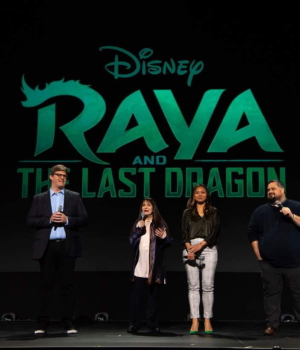Written by Charissa Roberson
Disney’s newest animated production, “Raya and the Last Dragon,” debuted on March 5 to rave reviews. The film currently holds a 94% on Rotten Tomatoes and boasts several firsts. After COVID-19 shut down the entertainment industry, “Raya” became the first Disney animation to be produced and released during the pandemic. The film also features Disney’s first Southeast Asian princess. With stunning animation, detailed world-building and a darker narrative, “Raya” represents another entry in what is becoming a new era of Disney classics.
Like “Frozen” (2013) (Norwegian) and “Moana” (2016) (Polynesian), “Raya” is influenced by real-life cultures. Kumandra, the fantasy world of “Raya and the Last Dragon,” draws heavily from many Southeast Asian countries, including Vietnam, Cambodia and Thailand. Fighting styles are modeled after traditional martial arts like Indonesian Pencak Silat and Muay Thai (NBC), and the characters greet one another with a joined-hand gesture similar to greetings common across Southeast Asia (Hollywood Reporter). In one scene, Raya offers “bánh tét,” a type of rice cake from Vietnam (Time).
Recent films like “Raya” have shown Disney’s increased concern for respectful representation. While developing the project, the creators of “Raya” visited several countries in Southeast Asia, and they even created a Southeast Asia Story Trust to ensure the film’s cultural accuracy (Hollywood Reporter). Some have criticized the choice to mix all the unique countries of Southeast Asia together in Kumandra. However, the filmmakers of “Raya” made this decision consciously.
“The easy thing we could have done was, this land in Kumandra was Thailand, this was Vietnam, this one’s Malaysia,” said Qui Nguyen, co-writer of the film. “But then it gets into a really ugly place of going, oh, well, this country is bad, and this one’s good, and our hero’s from here” (Time). Instead, Nguyen compared Kumandra to a fantasy world like “Game of Thrones,” which is based on a mélange of European countries.
In addition, in line with other recent Disney films, Raya’s arc doesn’t revolve around romance. Like Moana fighting to save Motunui, and Anna and Elsa working to restore Arendelle, Raya’s quest is to find the last dragon and rescue the land of Kumandra. The film also tackles mature topics and reaches some genuinely dark depths, dealing with death and despair in a manner reminiscent of “Big Hero 6” or “Frozen 2.” Recent Disney films appear to be more willing to trust their young audiences with deeper concepts and to let the storyline take more intense turns.
Alongside films like “Moana” and “Frozen,” “Raya and the Last Dragon” features beautiful CG animation, strong and complex characters and detailed representations of unique cultures. With this latest installment in their canon of “new classics,” Disney has once again upheld a reputation for storytelling that is both transporting and timeless.




